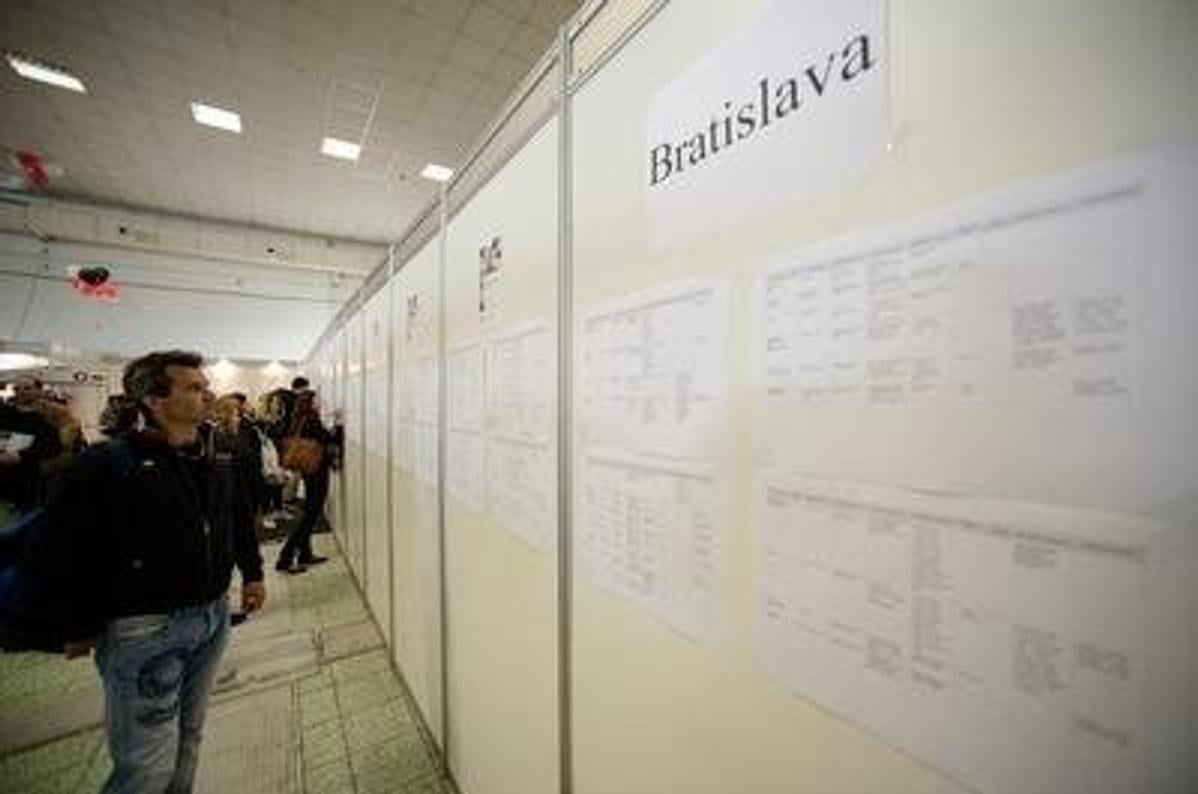EXPORTS as well as strong domestic demand keeps propelling the Slovak economy, which is predicted to grow by more than 3 percent during each of the next three years. Growth at this level can create new jobs and lead to the unemployment rate falling to pre-crisis levels. But experts are calling on the government to use this positive economic forecast to carry out structural reforms to make economic growth more sustainable.
The Slovak economy’s GDP is expected to grow by 3.2 percent this year and then accelerate to 3.8 percent next year and then slow down to 3.5 percent in 2017, according to the most recent mid-term prediction by the National Bank of Slovakia (NBS) released on June 9.
“Exports as well as domestic demand should be the sources of the economic growth,” said Jozef Makúch, NBS governor. “Low interest rates and the growing performance of the economy should create space for growth in private investments while public investments should be affected in the short term by a lower initial drawing of EU funds within the third programming period.”
The NBS expects that in line with the current, expected favourable developments in household income personal consumption expenditures will speed up in the next few years and will constitute one of the main drivers of economic growth.
While the central bank said there was not enough time to incorporate the planned measures of the so-called second social package into its prediction, the bank did state that the package could account for about 0.1 percentage point of economic growth as well as a similar impact on the inflation rate.
More jobs, but reforms suggested
Economic growth is naturally connected with new jobs and the level of three percent economic growth is considered as the point at which job growth occurs. The central bank predicts that about 26,000 new jobs will be created this year and roughly 20,000 during the following years. Overall employment would continue to improve over the next three years and along with demographic developments could result in a significant reduction in the unemployment rate to below 10 percent. The unemployment rate for the first quarter of 2015 was 12.4 percent according to the labour force sample survey conducted by the Slovak Statistics Office.
“Already in 2017 Slovakia may have single-digit unemployment,” said Makúch.
But to continue this trend the central bank noted the unfavourable structure of Slovakia’s economy and called for structural reforms to keep economic growth sustainability. Makúch said it would be appropriate that measures with a longer horizon that one election term should again be part of the election programmes of political parties and would help boost the Slovak economy’s sustainability.
“It is not our task to evaluate the government,” said Makúch, as cited by the SITA newswire, adding that the central bank has never had such ambitions. “But we consider it necessary to stress and regularly point out that the economy of Slovakia has a very poor structure – it is very pro-cyclic, very asymmetric.”
Makúch explained that the economy is mostly propelled by a few large companies and from a longer-term point of view it is necessary to make structural reforms so that the economy is sustainable into the future.
The central bank stated that Slovakia should use the current cycle of economic revival, supported by the monetary policy of the European Central Bank, to engage in structural reforms.
“Moreover, the improvement of the quality of business environment, a better-functioning labour market and improvement of the quality of public services in the environment of a relaxed policy will not only increase growth in the future,” Makúch stated. “Via positive expectations it should motivate companies to increase investments already today and this might help prolong the economic revival into the future.”
The OECD, in its latest economic outlook published on June 3, noted that investment in Slovakia is still well below the pre-crisis level and called for policies to support a greater inflow of investment.
“Foreign investment, which has been an important driver of capital accumulation, has been subdued due to sluggish growth among Slovakia’s trading partners and competition from low-cost countries in the region,” the outlook stated. “Policies to improve the business climate, infrastructure, innovation and skills can give impetus to more broad-based FDI. Strengthening administrative capacities and expanding the use of simplified procedures will help to increase the use of EU structural funds.”
Stanislav Pánis, analyst at J&T Banka, agreed that reforms would help.
“Structural reforms that would improve the business environment would certainly help”, Pánis told the TA3 news channel. “They would especially make the situation of small and medium-sized companies easier.”
Strong growth during the first quarter
“In line with expectations, the Slovak economy recorded relatively fast quarterly growth in the first quarter of 2015,” said Makúch.
Propelled by overall demand, the Slovak economy in Q1 grew at the fastest pace in the past three years, at 3.1 percent year-on-year in constant prices, which was 0.8 percentage point higher than the same quarter in 2014, the Slovak Statistics Office reported on June 5. The increase in in overall demand was due to both foreign and domestic sources.



 Illustrative stock photo (source: TASR)
Illustrative stock photo (source: TASR)